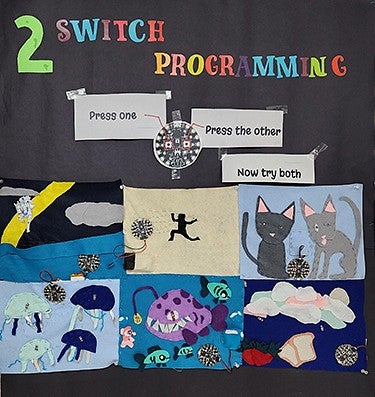Within the next few years, a computer science curriculum created at the University of Oregon could be a standard program in all K-12 public schools in the state.
The curriculum is a key part of Computer Science for Oregon, a National Science Foundation-funded program that aims to prepare all students to live and work in an ever-increasing digital world.
The goal is to teach computer science in new ways that open doors to female, Black, Indigenous, Latinx, rural and other students who historically have been shut out of computer science.
For years Oregon ranked dead last — 50th out of 50 states — in its investment in K-12 computer science education. That’s all poised to change with last November’s release of Oregon’s first-ever computer science education implementation plan.
The plan lays out that by 2027-28 every Oregon K-12 public school will offer access to computer science classes, and high schools will offer a pair of year-long computer science courses. The goal is that students will not merely use technology, they will become technology creators, designers and innovators.

“The new plan and naming of a state specialist have the potential to take computer science education in Oregon to a whole new level,” said Joanna Goode, Sommerville Knight Professor in the UO’s College of Education. “The state’s plan provides tremendous momentum to the professional development work we’re already doing with Oregon high school teachers.”
Goode said it will help expand computer science education to a broader range of students in more parts of the state, including some schools that have never offered it before.
In 2008 Goode collaborated with educator Gail Chapman to create Exploring Computer Science, a research-based high-school curriculum and teacher professional development program, with funding from the National Science Foundation. Their curriculum emphasizes hands-on activities to explore topics such as problem solving, web design, artificial intelligence, and electronic textiles, where students learn how to design clothing and toys that light up or make sounds, using fabric, coding, circuitry and conductive thread.
The curriculum quickly caught on at schools across the country, from California to Illinois to Maine, but not in Oregon. Many Oregon schools lacked computers, classroom space and teacher training, and with so many competing needs, computer science was no one’s priority, Goode said.
“I found that deeply disappointing but also motivating,” she said. “It was clear that we couldn’t just create the curriculum, then stand back and watch the magic happen. We also had to explore how teachers could connect students with the curriculum in engaging, relevant ways. It also pushed us to become more involved in the state policy work and to appreciate the role that research could play in steering our policy makers to make decisions that don’t reproduce inequities in computer science education but create opportunities to broaden access and participation.”

In 2017, Goode, Jim Hook and Jill Hubbard launched Computer Science for Oregon to support the adoption of the Exploring Computer Science program in the state. Hook is a professor of computer science at Portland State University; Hubbard is an associate professor of practice in computer science at the Oregon State University Cascades campus in Bend.
Another important goal was creating professional development opportunities so teachers were equipped to teach the classes and felt part of a supportive community. Computer Science for Oregon will expand the professional development program that has already trained teachers in more than 77 schools in 41 school districts across Oregon.
“Often these teachers are the only computer science instructors in their schools,” Goode said. “The professional development program creates a statewide community of teachers who can compare notes and ask each other for advice.”

Philip Reed, a computer science teacher at Waldport High School on the Oregon Coast, completed the week-long Exploring Computer Science summer professional development program in Bend and quarterly online trainings. Now he is among a group of regional specialists who help support other Exploring Computer Science teachers in Oregon.
Reed said he likes the curriculum because it breaks down concepts into smaller parts that students can understand, instead of overwhelming them.
His students especially like the hands-on projects. In the e-textiles unit, for example, one of his students made a Monsters Inc.-inspired Scream-o-meter, with lights that climb a tower as the volume level nearby increases.
Projects like these help “level the playing field and make computer science approachable for all groups of students,” Reed said.
Goode, who taught high school math and computer science in Santa Monica, California, before pursuing her doctorate in education, said teaching computer science holds much promise.
“Computer science is a tool that allows students to create, imagine and build things that can align with and express their identities,” she said. “Students are already really interested in computing. They like to carry computing devices — their phones — wherever they go. I’m a little shocked that despite this interest students already have, there aren’t more offerings or access.”
—By Sherri Buri McDonald, University Communications
This research team received funding support from the National Science Foundation and the U.S. Department of Education.


